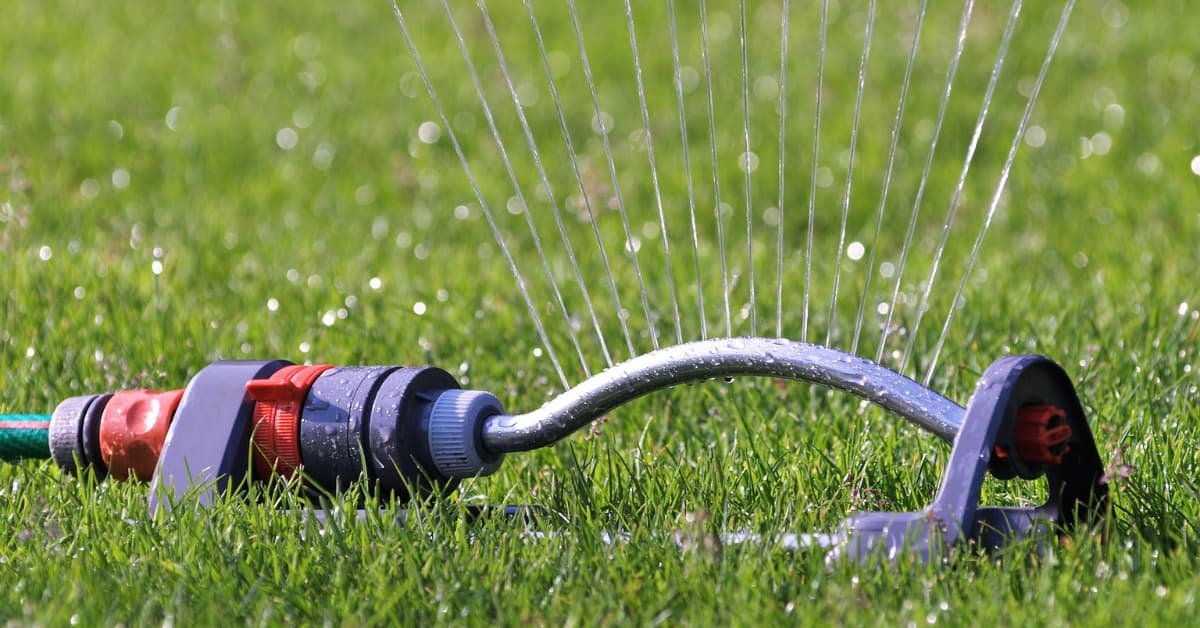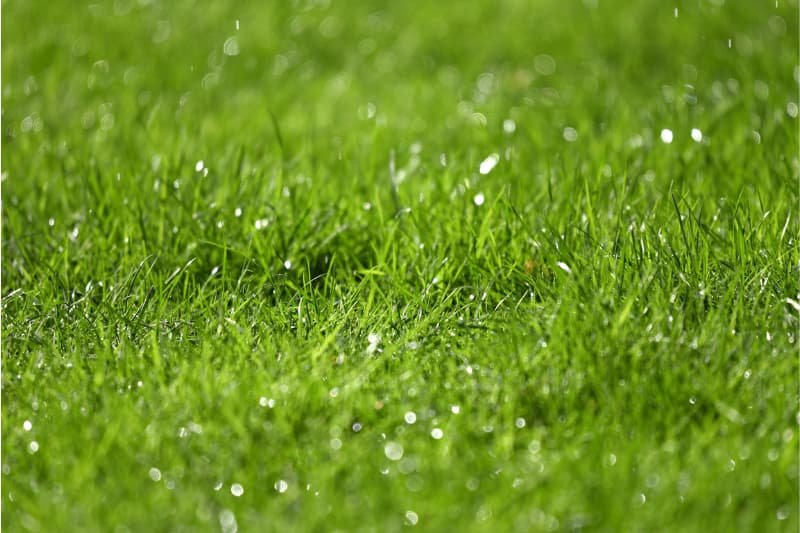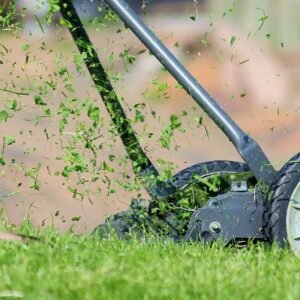
A well-manicured lawn is a sight to behold, and it speaks volumes about the homeowner’s dedication to lawn care. Lawn care is a vital aspect of maintaining a healthy and vibrant lawn, and watering is one of the most crucial components of lawn care. Proper watering techniques not only ensure that the lawn is adequately hydrated but also prevent bacterial and fungal problems, root rot, and plant damage. Thus, mastering the art of lawn care requires a thorough understanding of the best time to water grass, how often to water, and how much water is needed for optimal growth.
Lawn care requires a scientific approach that involves the application of specific techniques and methods. Proper watering is essential in achieving a lush and healthy lawn. However, watering at the wrong time can be detrimental to the lawn’s health. Watering in the evening or at night, for instance, can lead to fungal problems, whereas watering in the morning ensures that the lawn has enough time to dry before nightfall.
In this article, we will delve into the best time to water grass, taking into account soil type considerations, grass seed watering, and water conservation tips. By the end of this article, you will have a comprehensive understanding of the techniques required to master the art of watering your lawn.
Short Summary
- Watering techniques are crucial for maintaining a healthy and vibrant lawn, preventing bacterial and fungal problems, root rot, and plant damage.
- The best time to water grass is in the morning before 10 a.m., and it is important to water all areas of the lawn to prevent burnt patches.
- Different types of soil have varying water-holding capacities, and it is recommended to water deeply and infrequently for optimal absorption and retention of moisture.
- Taller grass blades provide shade to the soil, reducing water evaporation and retaining moisture, while encouraging deeper root growth for better absorption of water and nutrients.
Proper Watering Techniques

Proper watering techniques are essential for maintaining a healthy lawn. Watering in the morning or late afternoon is recommended as it allows for the grass to absorb the water before the heat of the day.
It is important to soak at least six inches of soil to ensure that the grass roots grow deep and strong. Overwatering should be avoided as it can lead to root rot. Watering frequency is also key, with sandy soils requiring watering every three days and clay soils requiring watering once a week.
A hygrometer can be used to determine the proper watering time for different parts of the soil. Leaving the water on for at least 15 minutes is recommended to ensure that the water soaks down to the required depth.
It is important to water all areas of the lawn to prevent burnt patches. Cooler weather requires less watering, while hot weather may require more frequent watering. Effective turf management, including proper watering techniques, can lead to a healthy lawn.
Timing of Watering
The timing of watering is crucial for optimal lawn health. The best time to water grass is in the morning before 10 a.m. This is because the air is cooler, which means less evaporation and more water can be absorbed by the grass. Additionally, morning watering allows the grass to dry before the sun is at its hottest, reducing the risk of fungal and bacterial problems.
Here are four benefits of morning watering:
- Optimal Absorption: Watering in the morning allows the grass to absorb more water, which is essential for healthy growth.
- Reduced Risk of Fungal and Bacterial Problems: Morning watering allows the grass to dry before the sun is at its hottest, reducing the risk of fungal and bacterial problems.
- Reduced Water Waste: By watering in the morning when the air is cooler, less water is lost to evaporation, which means less water is wasted.
- Reduced Stress on the Lawn: Watering in the morning reduces stress on the lawn, as the grass has ample time to absorb the water before the heat of the day.
On the other hand, watering at night can be detrimental to the health of your lawn. There are several risks associated with nighttime watering, such as the increased risk of fungal and bacterial problems, due to the grass remaining damp for an extended period. Additionally, excess water can harm plants and create a breeding ground for microbes. Therefore, it is essential to avoid watering at night and stick to the recommended morning watering schedule.
Soil Type Considerations
Soil composition is a crucial factor to consider when watering a lawn. Different types of soil have varying water-holding capacities, and this can affect the frequency at which watering should be done. Sandy soils, for instance, drain water faster and require more frequent watering than clay soils.
Watering frequency should also be determined by the grass type, weather conditions, and the season. In general, it is recommended to water deeply and infrequently, allowing the water to soak at least six inches down the soil. This encourages deep root growth and helps the grass withstand drought and other stresses.
Apart from watering frequency, soil composition also affects the amount of water that can be absorbed by the grass. Clay soils tend to hold water longer and can lead to waterlogging, which can lead to root rot and fungal diseases. To avoid this, it is important to water clay soils slowly and in intervals, allowing the soil to absorb the water gradually.
On the other hand, sandy soils require more water as they drain quickly and can become dry and compacted, leading to poor grass growth. Therefore, it is important to provide enough water to soak the soil and avoid overwatering, which can lead to runoff and waste.
Adequate watering, based on soil composition, promotes optimal grass growth and helps maintain a healthy lawn.
Grass Seed Watering
The success of grass seed growth heavily relies on the amount and frequency of watering, as it is essential to provide optimal moisture for the seeds to germinate and establish strong roots. Seed germination requires consistent moisture, but overwatering can lead to fungal or bacterial problems.
It is recommended to water grass seed in the morning before 10 a.m. or in the late afternoon to ensure optimal absorption and prevent excess moisture from sitting on the surface overnight. Watering grass seeds at night should be avoided as it can lead to fungal or bacterial growth that can harm young seedlings.
Additionally, nighttime watering can lead to poor absorption as cooler temperatures slow down the metabolic activity of the seeds. Proper watering techniques, such as soaking at least six inches of soil, are essential for the establishment of strong roots.
Using a hygrometer can help determine the appropriate watering time and frequency for different parts of the soil, ensuring that each area of the lawn receives adequate moisture for optimal growth.
Water Conservation Tips
One effective way to conserve water while maintaining a healthy lawn is to adjust the height of the mower blades. Taller grass blades can provide shade to the soil, reducing water evaporation and retaining moisture. Additionally, taller grass can encourage deeper root growth, allowing for better absorption of water and nutrients. It is recommended to set the mower blades at a height of three inches or higher for maximum water conservation and lawn health.
Another way to conserve water is through rainwater harvesting. This involves collecting and storing rainwater for later use in watering plants and lawns. Rain barrels can be installed underneath downspouts to collect rainwater, and the water can be used during times of drought or water restrictions.
Additionally, planting drought-resistant grass species can help reduce the need for excessive watering. These grasses have deeper root systems and are better adapted to dry conditions, requiring less water to thrive.
By implementing these water conservation methods, homeowners can maintain a healthy lawn while reducing their water usage and contributing to sustainable landscaping practices.
FAQs
How can I tell if I am overwatering my lawn?
Overwatering can lead to lawn diseases such as root rot and mold growth. Measuring soil moisture is crucial in preventing overwatering. Signs of overwatering include yellowing leaves, slow growth, and waterlogged soil.
Can I use rainwater to water my lawn?
Rainwater is an effective and eco-friendly way to water lawns. Its benefits include being free from chemicals and minerals found in tap water, and it can be collected through various methods such as rain barrels, cisterns, or rooftop catchment systems.
How often should I fertilize my lawn?
Fertilizing lawns with organic fertilizers has numerous benefits such as improved soil health and reduced environmental impact. Soil testing is essential to determine the nutrient needs of the lawn for optimal growth and to avoid over-fertilization.
Does the type of grass affect the watering requirements?
Grass-type watering differences exist due to variations in water absorption rates, root depth, and drought tolerance. Effective watering techniques should be tailored to the specific grass type to prevent over or under-watering, and ensure optimal growth and health.
Can I water my lawn during a drought or water restriction period?
Watering your lawn during a drought or water restriction period can be challenging, but there are alternative lawn care methods that can help conserve water. Consider using drought-resistant grass species, reducing lawn size, and using mulch. Additionally, following water conservation tips such as watering in the early morning or late afternoon and avoiding over-watering can help maintain a healthy lawn while minimizing water usage.



